November 18th, 2013 §
Today dawned in marked contrast to the last few days. In place of cool mist and fog were bright sun and almost 70 degree temperatures. I seized the opportunity to complete the year’s final tasks in the garden that surrounds the house.
I started by robbing my compost pile that’s been in the making for almost a year. It’s a mix of garden waste, grass clippings, soiled chicken house bedding, and kitchen scraps. Instead of engaging in a hot composting process, which requires a more precise mix of nitrogen-rich greens and carbonous browns, plus proper moisture and aeration, I just throw everything in a pile in the woods and let time work its magic. Which it does, yielding a worm-full and deeply nutritious mix that every fall gets spread about the farm.
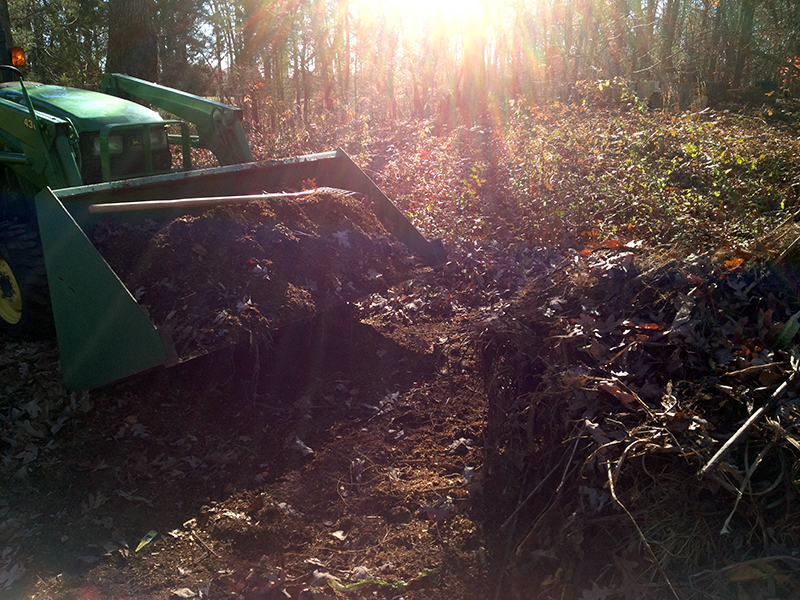
I forked the compost into the big tractor bucket. I prefer using this large bucket when dealing with bulky materials because it can carry much more than the smaller bucket. The downside, though, is that I can’t dig or scoop with this big bucket without damaging the tractor’s arms, so that means lots of hand forking. In many ways this is still necessary, though, as the margins of the pile aren’t well defined and the pile isn’t large enough to efficiently scoop with a small bucket anyway.
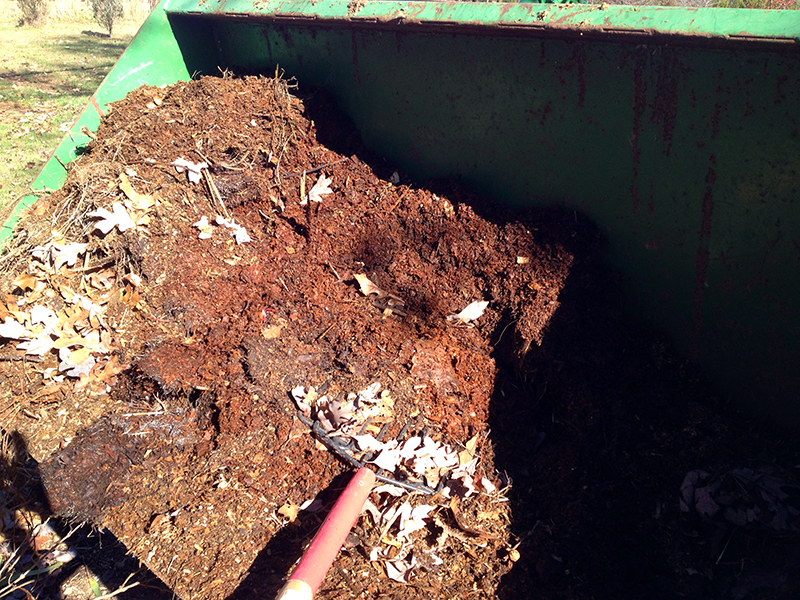
I managed to eek two large buckets of compost out of my pile. It’s not a ton, but I spread it almost an inch thick over all the exposed dirt in the garden and even had enough to pile some extra around heavy feeders, such as the roses.
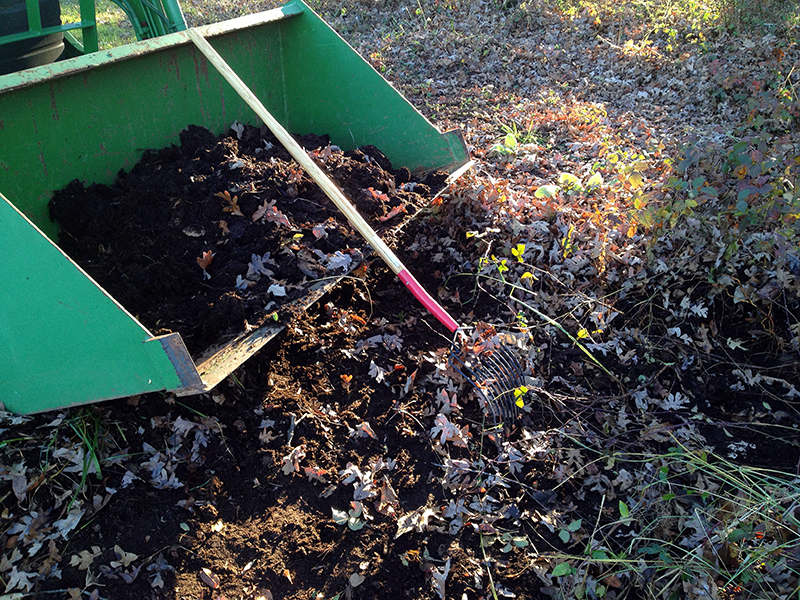
Once the compost was down, I went back for mulch. My target was the remnants of the ten yards that were delivered in early April. They’d been spread about a bit in the field and briars and grass were starting to grow up in the pile.
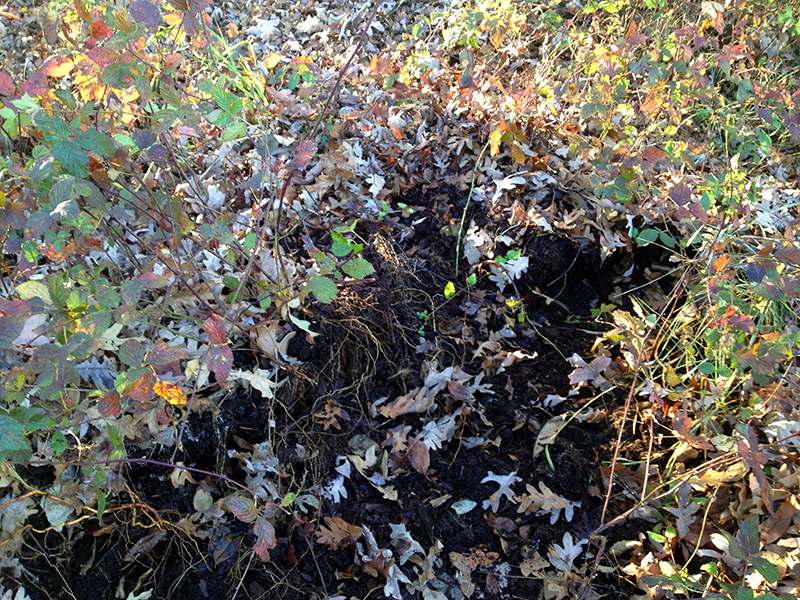
This required lots of hand forking and tedious, prickly picking through, but I managed to get four big bucketfuls out of a rather insubstantial looking pile. Not only did it feel good to reclaim something for which I’d paid good money, but the eight-month rest in the field had decomposed the mulch the absolutely perfect consistency—damp, dark, crumbly and ready to go to work building soil. It makes me realize I should be ordering all my mulch at least half a year in advance of when I want to apply it.
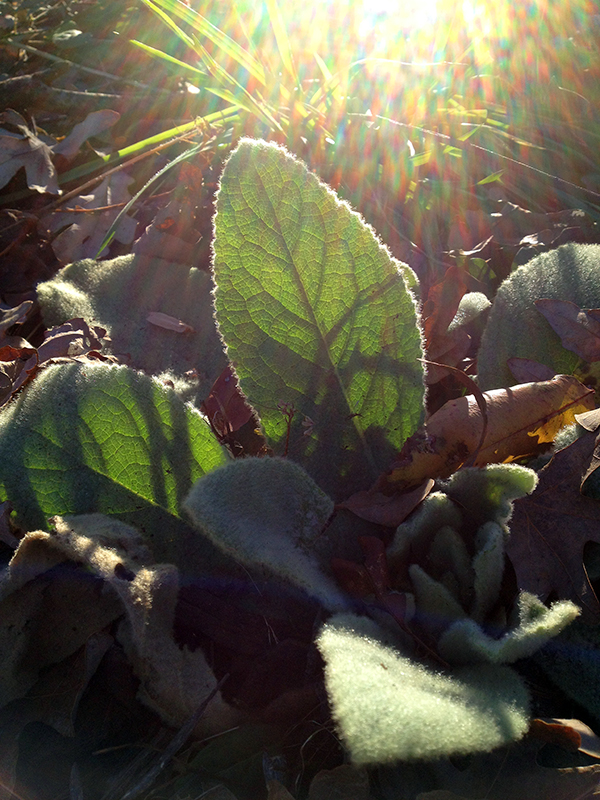
Anyone who’s been reading this blog for a while knows that when it comes to mulch, I prioritize its soil-building properties over any aesthetic contribution it may make to the landscape. The key to building good soil is keeping it mulched with an appropriate material, one that breaks down and adds organic matter to the soil. When you’re working with what I’ve got here—compacted red Virginia clay around a construction site—short of digging out all the native dirt and replacing it the only way to create great soil is through repeated application of amendments such as compost and mulch. Do that for ten or fifteen years and you might get somewhere. I am three years in and my fantasies of dropping a trowel and having it sink blade deep in rich, black soil are a long way off.
But I work at it. And will keep working at it every year as long as I can wield the pitchfork.
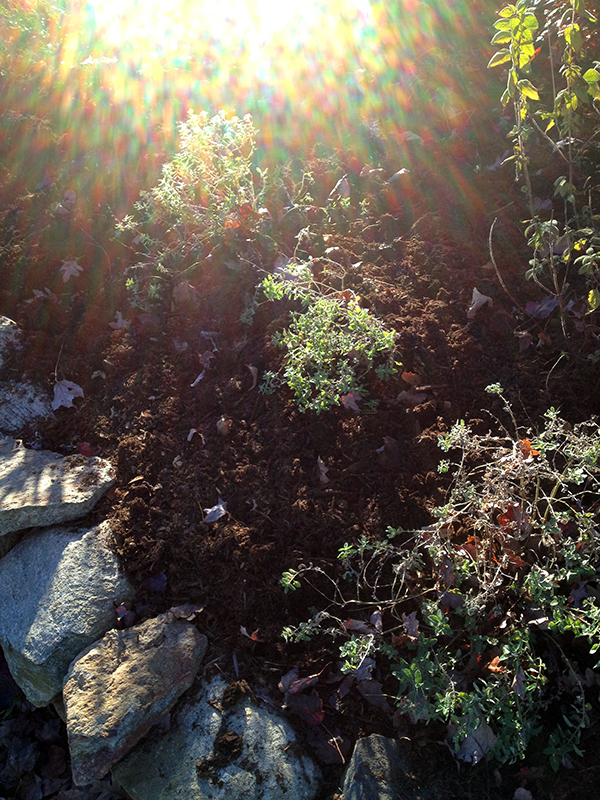
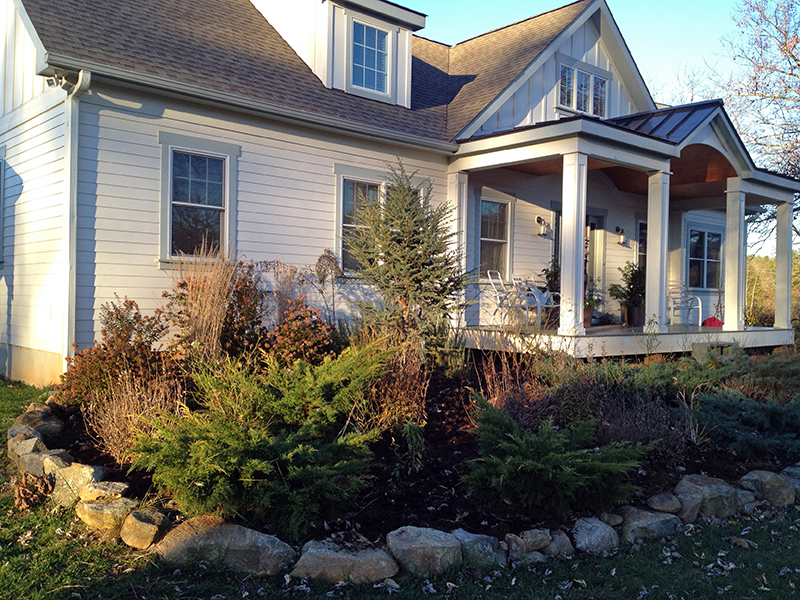
By sundown I could barely move but I was finished spreading compost and mulch, and I felt good about this final gardening act of the year. This is always one of the most physically demanding days of the year, and I am glad to have it behind me. Now I celebrate, and rest easy knowing I have left a nutritious blanket over my garden that will nourish it through this winter and into the spring to come. It’s a good feeling, despite the protest of every nerve and muscle in my bone-tired body. I’m headed for the epsom salts and a scalding bath, and most likely a well-deserved beer.
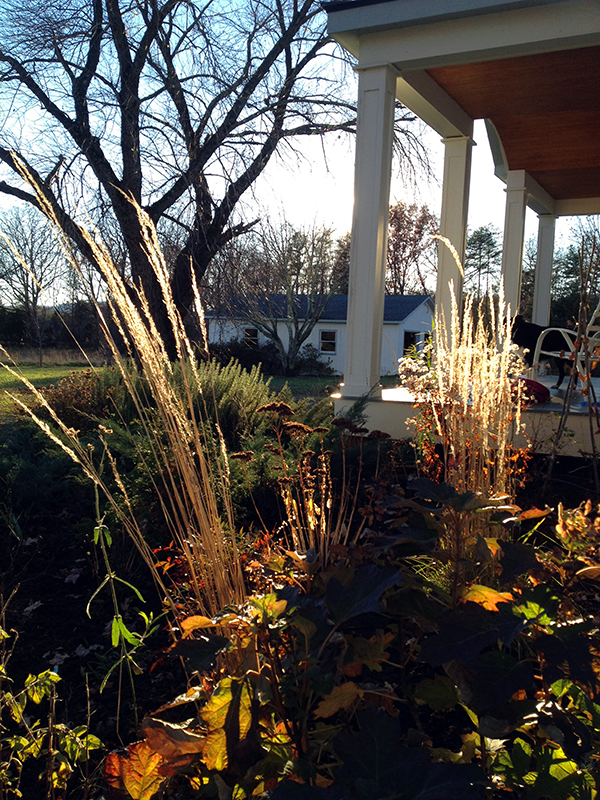
June 16th, 2013 §
We now move in to the tomato patch, a topic deserving of its own post.
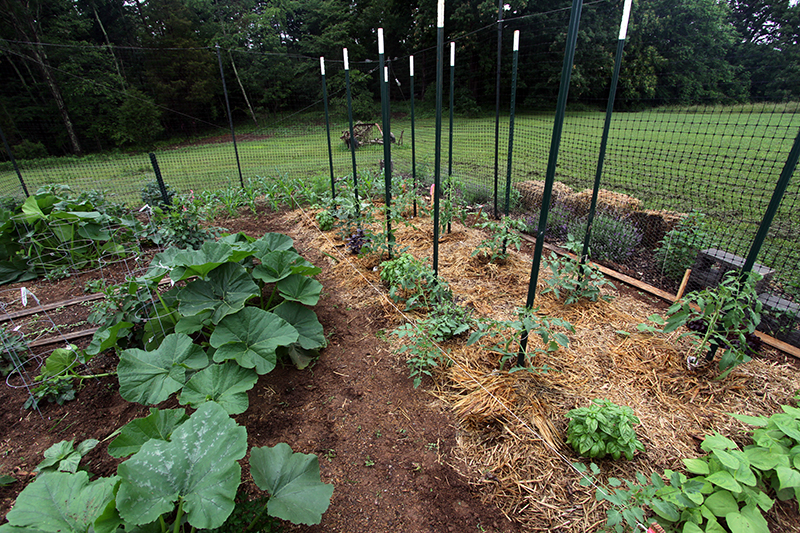
This year I got most of my seedlings from the Piedmont Master Gardener’s Plant Sale. I bought a bunch of heirlooms, including:
Constoluto Genovese
Black Cherry
Ponderosa Red
Orange Oxheart
Mr. Stripey (the only tomato of these I’ve grown before, and a favorite)
Mortgage Lifter
Green Zebra
Amish Paste
Sun Sugar (a deviation from last year’s Sun Gold, which though delicious split too much for my liking)
Abraham Lincoln
I chose these heirlooms because for the past few years I have grown mostly big-box store hybrids, and I haven’t been wowed by their taste. So this is an attempt at a fantastic tomato even though I know I am running the risk that these less-disease resistant varieties might be struck down before bearing fruit. But I also hedged my bets a bit by planting two hybrids: New Girl and Big Beef.
The worst day of spring gardening is the day I put in the tomato stakes. These are heavy eight-foot fencing posts. Installing each means I climb on a ladder and balance, trying not to tip forward and impale myself while using a sledgehammer to drive each post in the ground. This year, as usual, I ended up with a black-and-blue left hand—the victim of each missed strike. And there are many while sledgehammering at the top of a ladder.
But once the stakes were in, and after a few days of recovery, comes one of the best spring gardening days: planting the tomatoes. I did every thing I could to give my plants the best possible start, including amending each planting hole with two gallons of home made compost, a tip I picked up from this Mother Earth News article:
Unless you planted some vetch in early fall, simply mix about two gallons of compost into each planting hole. In a tomato trial at Iowa State University, compost increased overall yields by 40 percent, while early yields shot up by more than 200 percent.
I searched for but wasn’t able to find the cited Iowa State study. I went ahead with the advice anyway as an experiment.
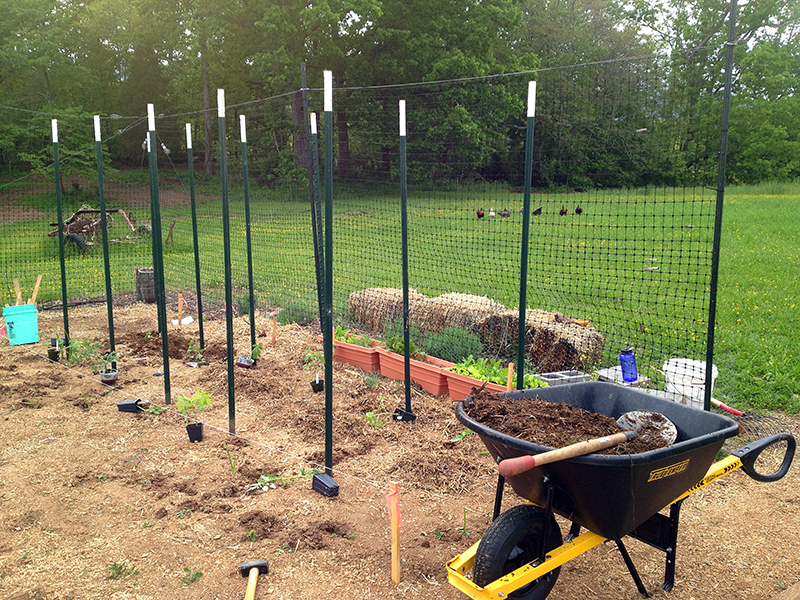
The plants had grown so leggy that some of them got as much as a foot of stem buried during planting.

The buried stems grow roots and help anchor the plant more firmly in the ground. But don’t try this with just any plant—burying most plants this deep will mean certain death (for the plant!)
After each plant was tucked deep in its compost nest I circled each stem with aluminum foil, as I always do to ward off cutworm damage. It was cold and all the plants looked peaked as they transitioned to full-sun and through transplant shock. I realized they weren’t well hardened off, and so I shaded them with boxes and gave them extra water. Then I went to the beach for eight days and worried about them all the while. But when I came back it looked like most had taken hold and were doing well. The only one that looked poor was Green Zebra, and that’s my fault for breaking its rootball while planting it. I kept it in the ground and stuck the Big Beef in next to it.
And now they’re all doing great and we’ve transitioned into the normal maintenance routine which means pinching out suckers and tying each vine to the post as it grows. Most plants have already set flowers, which is a sign that their compost beds aren’t too rich for their liking—a good thing.
I remain hyper-aware to signs of disease, and have taken a few steps to help prevent it. After the soil warmed up, I heavily mulched around each plant with straw. This keeps soil from splashing on the plant leaves when it rains, and cuts down on disease transmission from soil-borne pathogens. I have also removed any lower leaves that touch the soil with the same idea in mind. It’s a hard call to make, as those leaves shade the stem during the hottest part of summer, but any way to keep the dirt off the leaves helps reduce infections.
With all this preparation, and a hefty dose of luck, I hope to have a few good tomatoes this year. Stay tuned!
December 31st, 2012 §
For weeks now there’s been a mystery among the chickens. They’ve been losing feathers across their lower backs, sometimes so much so that they would bleed, attracting the other chickens to peck at their wounds. They’re too young to molt, and I didn’t find any symptoms of mites or lice, so I suspected the newly “active” young cockerel, Calabrese, of clumsy technique.
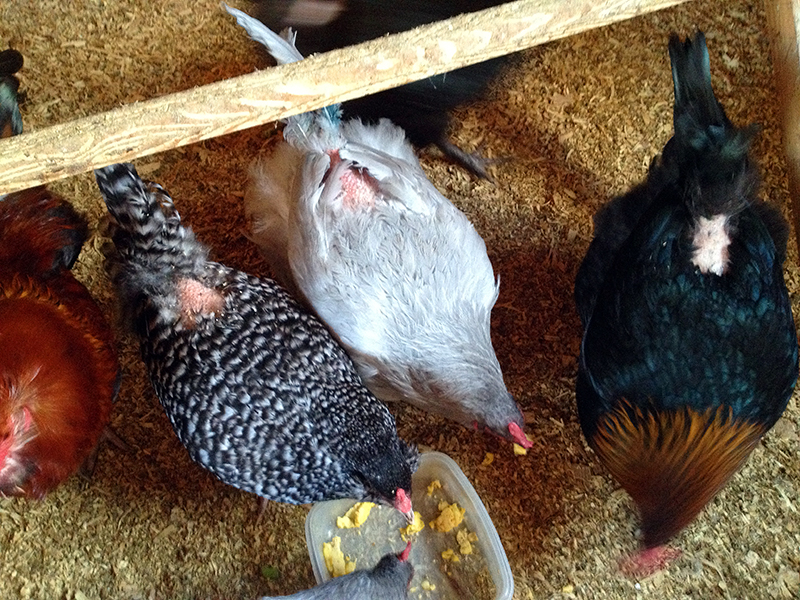
But the other day I noticed that even he was starting to get a ratty back. I picked him up by the feet and dug around in his tail feathers. I found a group of blood feathers (growing feathers with active blood supply still in their sheaths) that had been ripped off close to the skin and were bleeding.
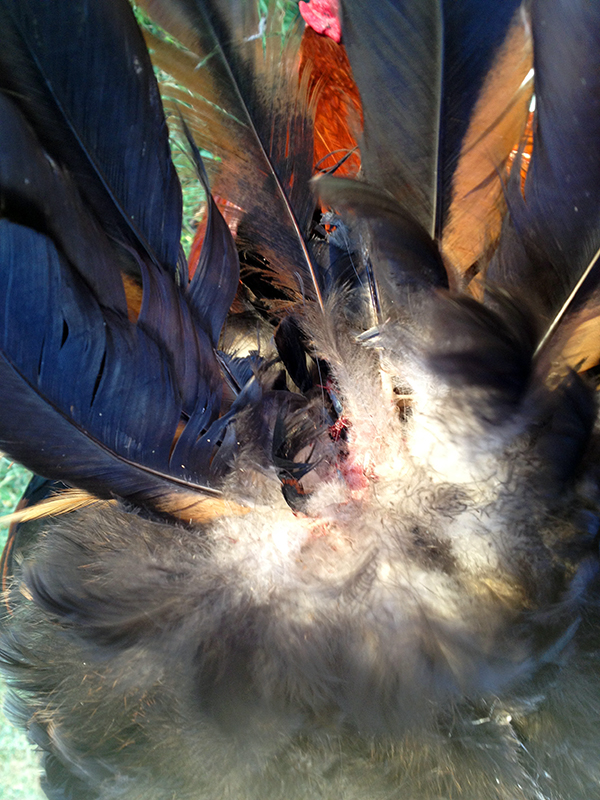
Hmmm…the plot thickens.
I looked at the hens again and saw that only one had pristine feathering on her back: Iris, my broody hen. This surprised me, as Lilac has historically been the feistier hen and I’ve never seen Iris attack any of her coopmates. I was loathe to separate her from the flock because of the upset to their social dynamic, so I looked for other solutions. A quick internet search turned up a lack of protein as a possible reason for feather eating.
As a quick supplement I whizzed eight eggs, shells and all, in my food processor and cooked up a giant omelet.
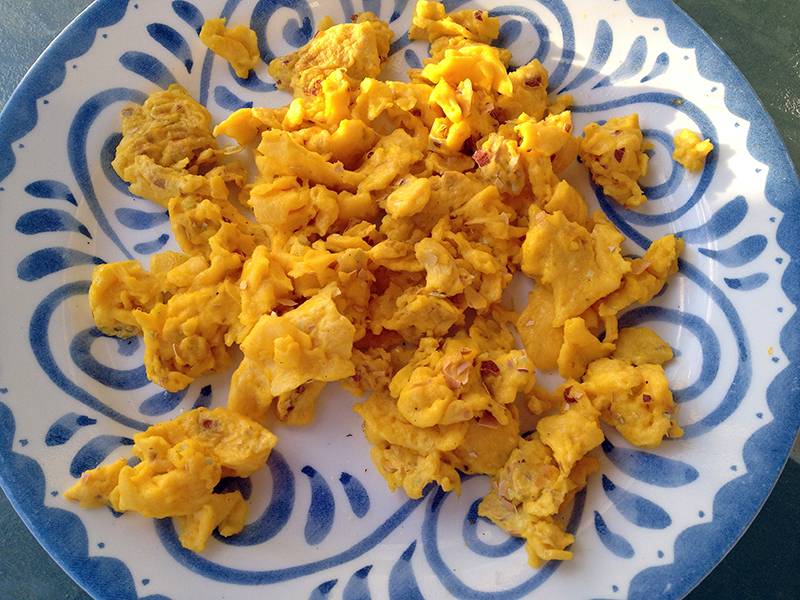
I fed this to the birds as I caught them, one by one, for ministrations. I started with Calabrese, whose broken blood feathers were continuing to ooze and no-doubt attract more pecking from the flock. I pulled each out with my pliers.
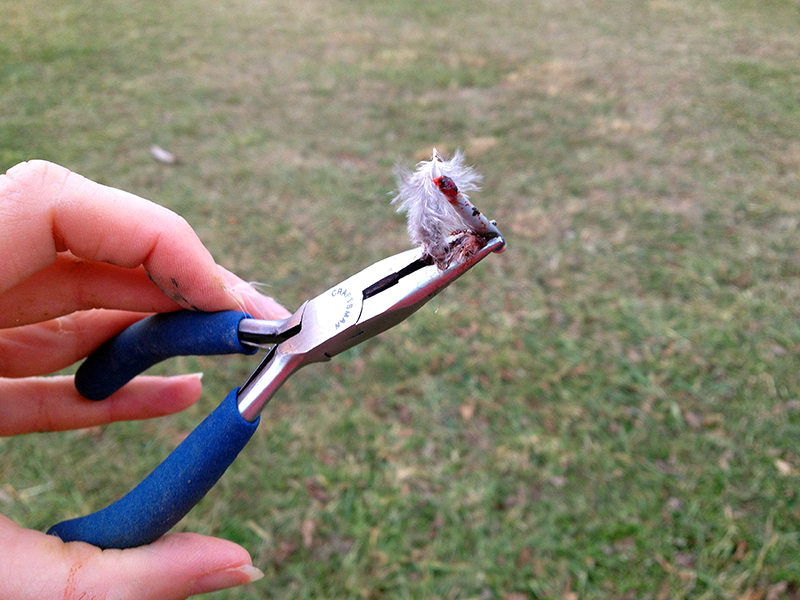
Then I rubbed all the birds with blue food coloring, which tints their red skin and makes it less attractive to picking.
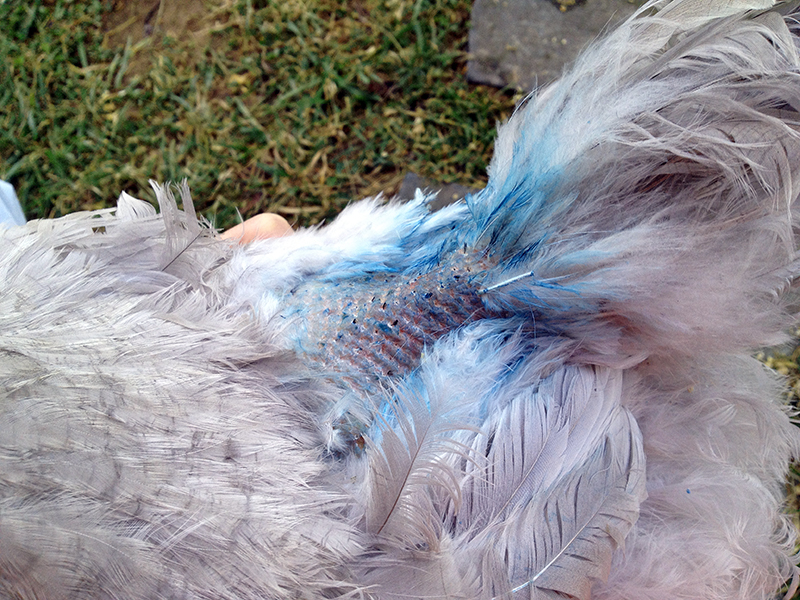
By the time that fiasco was over I had food coloring on my jacket, on the coop, my dog’s nose, and of course on my Smurf hands:
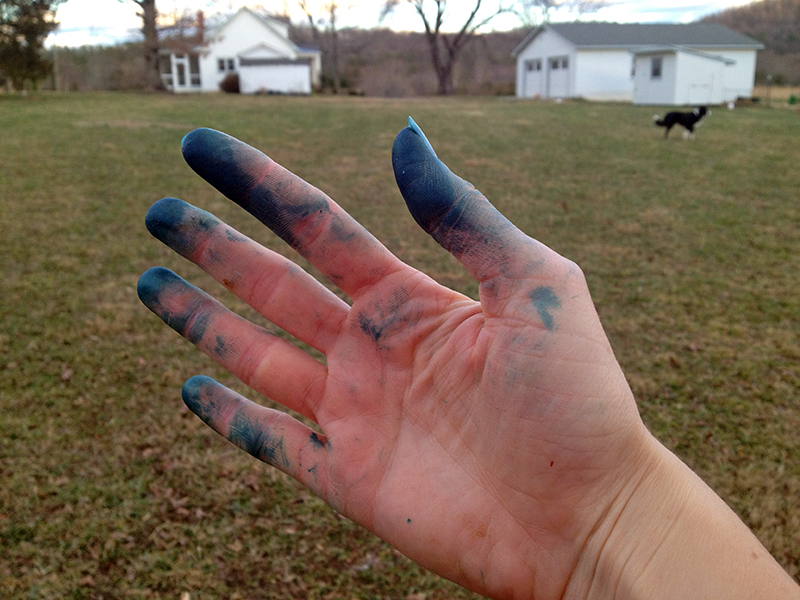
But triage is complete and now I must turn my attention to my flock husbandry, which is obviously lacking. I spent the better part of Saturday reading halfway through Harvey Ussery’s wonderful book, The Small-Scale Poultry Flock. I picked this up at the Mother Earth News Fair and just now have gotten in to it. That I can read it straight through like a novel is testament to Ussery’s writing. I think he gives the best advice on chickens that I have read anywhere—really practical stuff presented in a humorous, engaging tone. I appreciate Ussery’s wholistic outlook on keeping birds and his emotional sensitivity to creatures that are often regarded with the opposite of respect.
My reading confirmed what I already knew, that my birds were too closely confined, and bored. I let them out to range the yard and gardens about twice a week, but that’s obviously not enough to keep them happy. So now, in addition to feeding supplemental protein, I need to figure out a way to get the birds outside more often while still keeping them safe from hawks, foxes, dogs, etc. And, I need to take more advantage of the chickens’ manure and their pest-eating skills. And it wouldn’t hurt, what with the cost of feed, to have them hunt some of their own food.
I’ve got a nice compost pile just sitting in the woods, far enough from the coop that the birds don’t venture there.
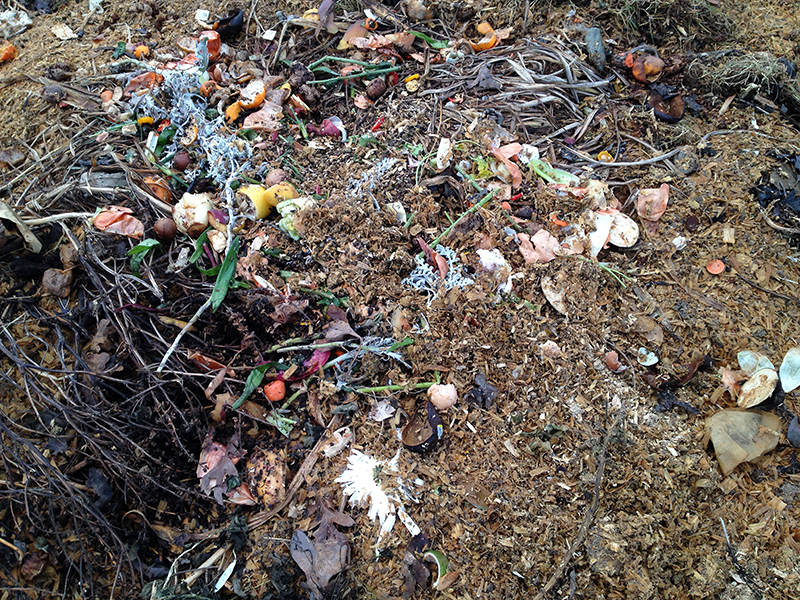
And I’ve got a deer-fenced garden enclosure, reinforced with dug-in wire at the bottom, that’s now got nothing but a thick straw mulch on it to keep the soil organisms happy through the winter.
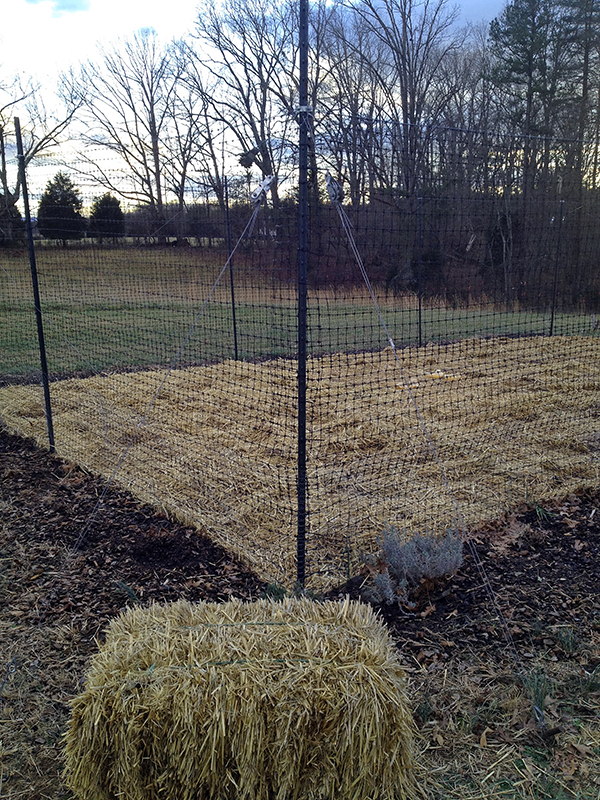
I wonder what would happen if I started composting directly in the garden, turning the chickens out in there each day to pick through the pile? The worm life would definitely benefit. The birds would be reasonably protected from ground predators, and if Tucker is outside he helps chase off any threats from the air. I just need to rig a semipermanent passageway from the coop to the garden so that the birds can travel back and forth, both for safety and egg laying, which happens throughout the day.
I’ll still let the chickens out to roam the pasture if I am around to supervise, but this might be a good way to solve the confinement problem I am having while putting the birds to work in the garden. It’s worth a shot.
And then when I do some more research and get some cash flow I will invest in an ElectroNet fence. With that I could have the birds work different sections of the yard without always worrying that they’ll be carried off by a fox. I think it would be good to erect the fence around the garden and run the birds in this “moat” after the garden has been planted and they can no longer be free in it. Perhaps they would help with the insect population if they were serving as ravenous alligators to any bug trying to crawl toward my vegetables!
December 10th, 2012 §
Have been a whirlwind of productivity and enjoyment best relayed in photographs.
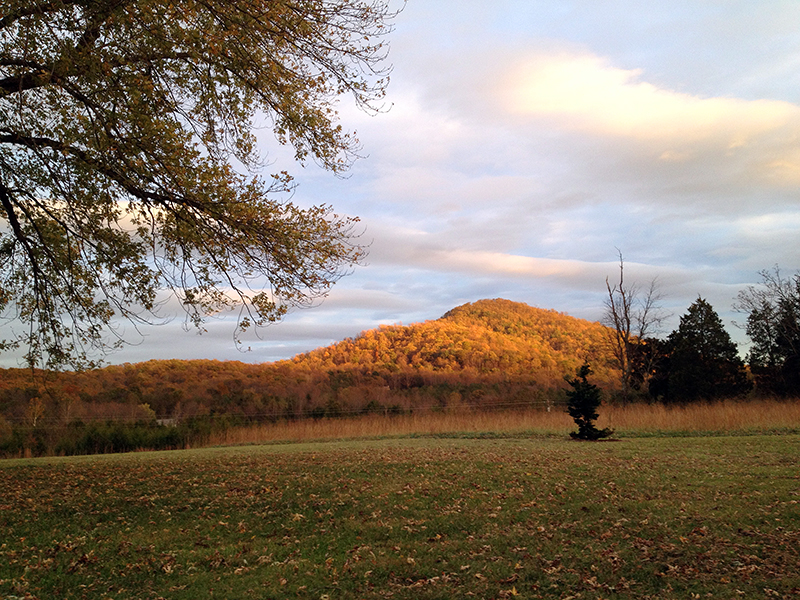
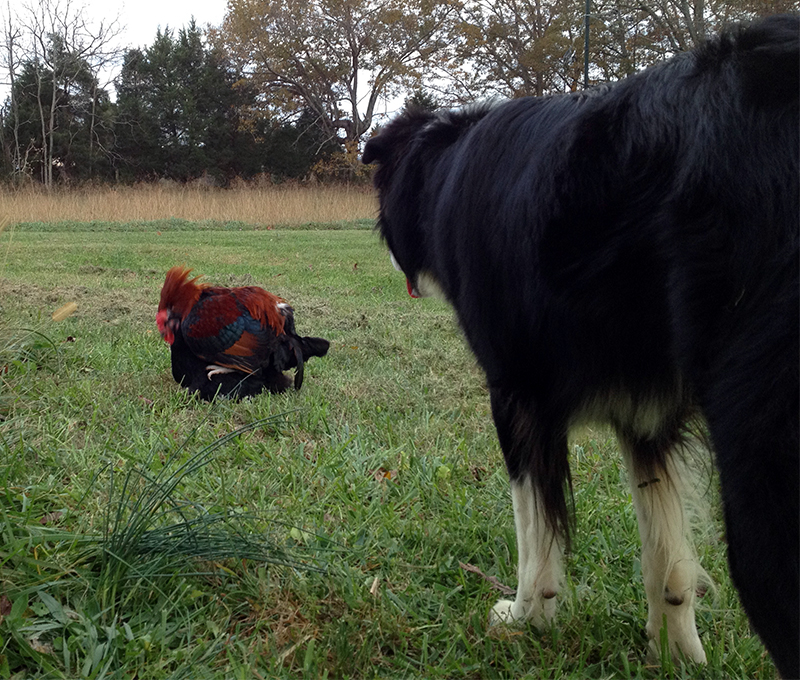 Pervy Tuck
Pervy Tuck
 First raid of the compost pile several years in the making.
First raid of the compost pile several years in the making.
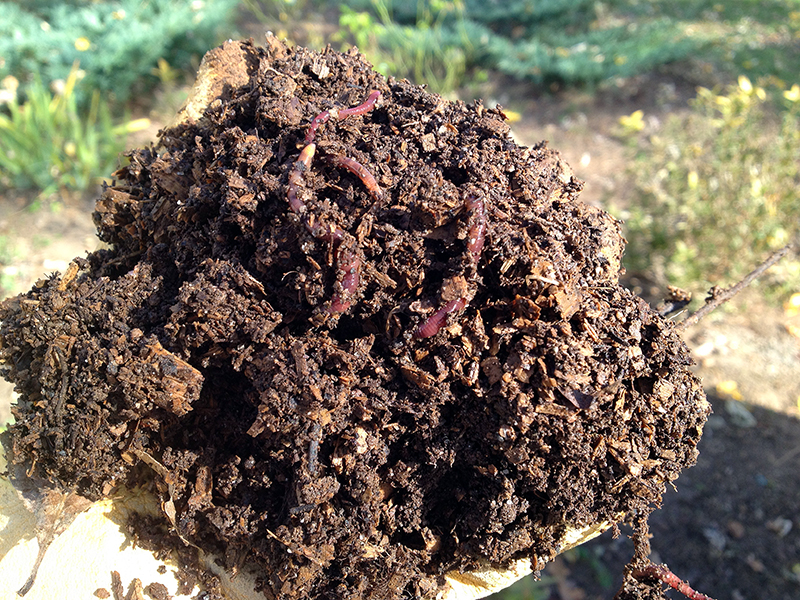 I know I am an unusual girl to take such pleasure in this handful of homemade worm-happy, vital compost. It is beautiful, and I am proud.
I know I am an unusual girl to take such pleasure in this handful of homemade worm-happy, vital compost. It is beautiful, and I am proud.
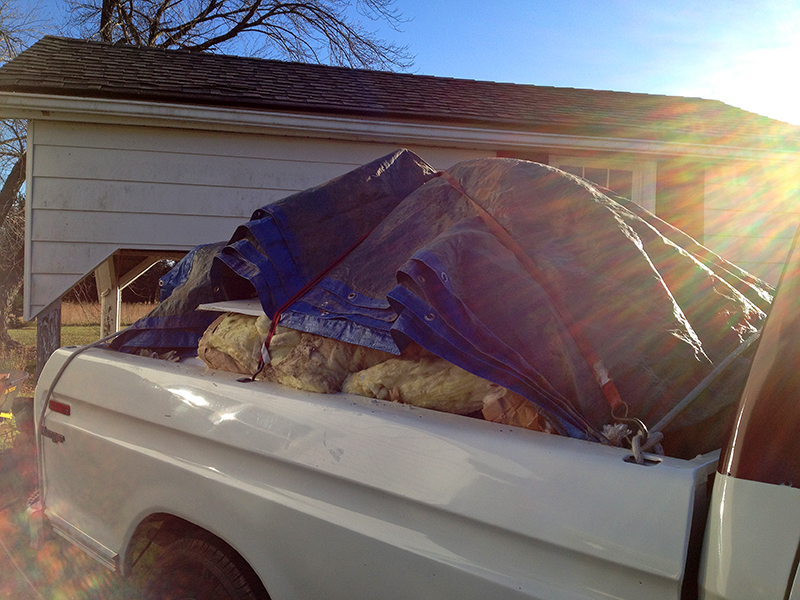 Well house renovation begins with an insulation/drywall blitzkrieg.
Well house renovation begins with an insulation/drywall blitzkrieg.
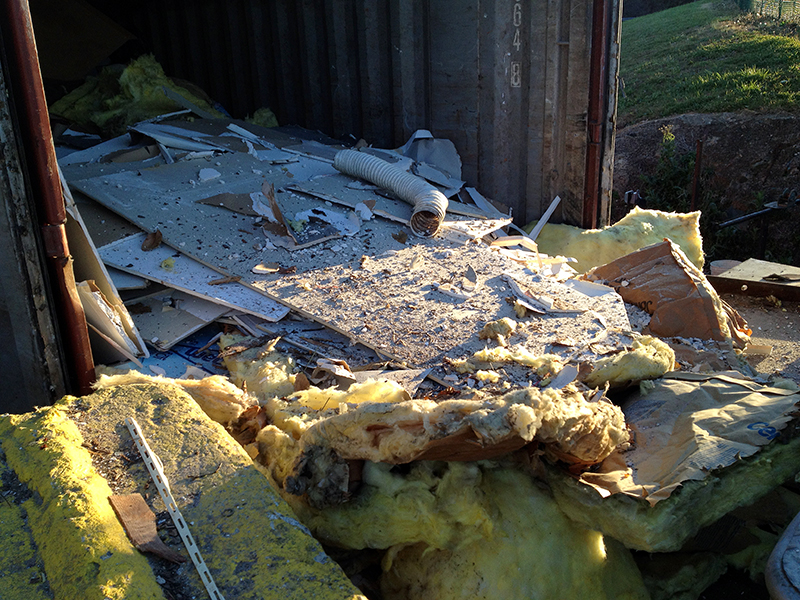 And a right-under-the-4:00 p.m.-closing-wire Saturday dump run. Good riddance to this stink bug, ladybug, mouse poo pile!
And a right-under-the-4:00 p.m.-closing-wire Saturday dump run. Good riddance to this stink bug, ladybug, mouse poo pile!
 Lots of wonderful meals prepared, including salmon and sweet potato stew, goat cheese and caramelized onion focaccia, and a roasted beet salad with balsamic dressing. The eating’s been good around here lately!
Lots of wonderful meals prepared, including salmon and sweet potato stew, goat cheese and caramelized onion focaccia, and a roasted beet salad with balsamic dressing. The eating’s been good around here lately!
 Vintage gas pumps resurrected from my woods and hauled away to be transformed in to art.
Vintage gas pumps resurrected from my woods and hauled away to be transformed in to art.
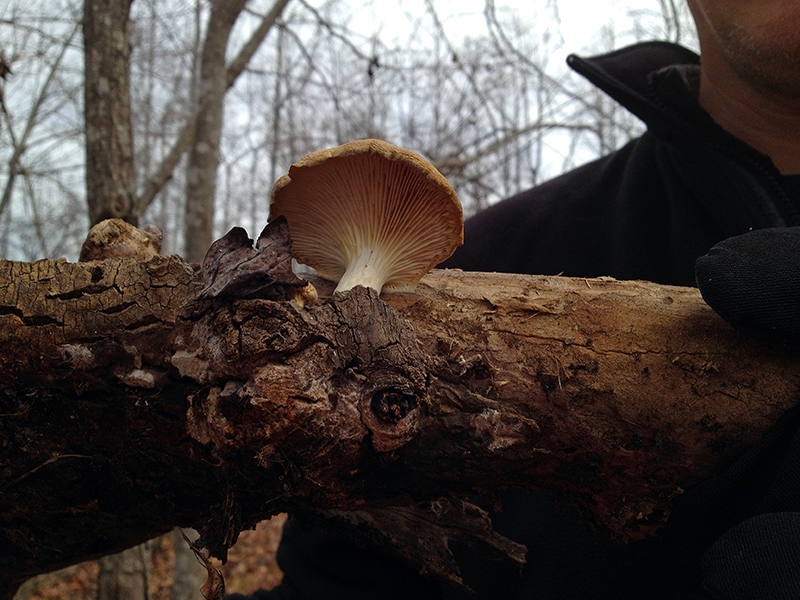 Thanksgiving mushroom walk!
Thanksgiving mushroom walk!
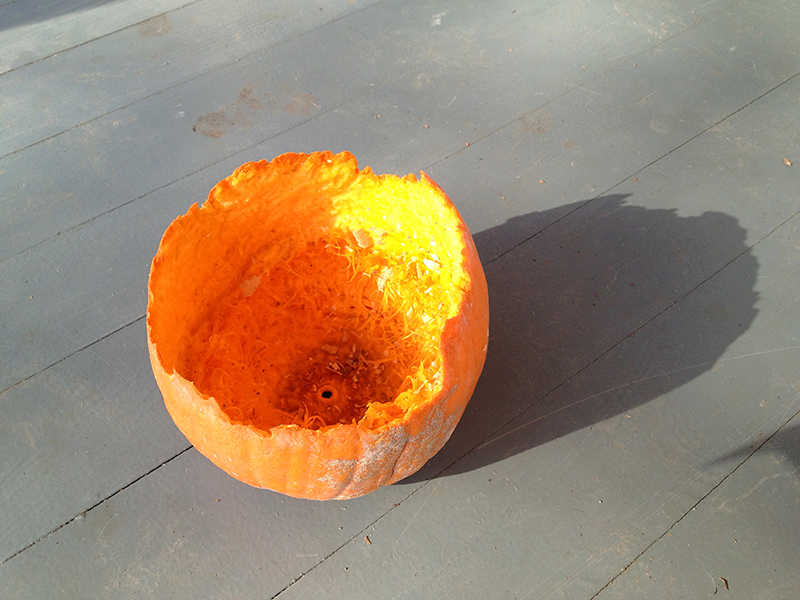 Chicken sculpture
Chicken sculpture
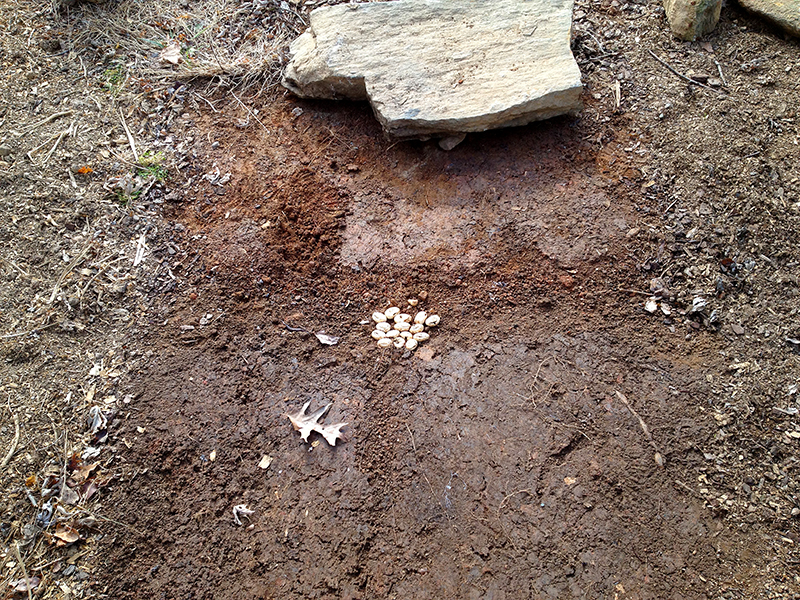 Discovered under my OSB front sidewalk: a whole clutch of snake eggs!
Discovered under my OSB front sidewalk: a whole clutch of snake eggs!
 I am still cringing that Mama Snake (probably Mama Black Snake) managed to sneak her brood so close to the house. And yet I saw not a single black snake last year, when they were incubating right on my doorstep! That’s irony for you.
I am still cringing that Mama Snake (probably Mama Black Snake) managed to sneak her brood so close to the house. And yet I saw not a single black snake last year, when they were incubating right on my doorstep! That’s irony for you.
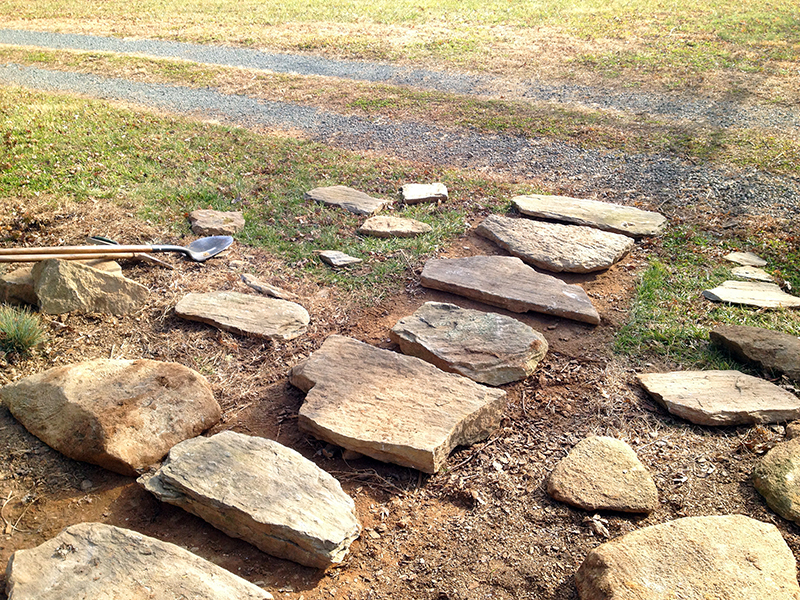 Thrifty new front walk under construction, using stones dug from the property. It’s rustic, but it’s better than rotting, snake-incubating OSB and sure beats the $9,000-$18,000 quotes I got from the pros for hardscaping this area…
Thrifty new front walk under construction, using stones dug from the property. It’s rustic, but it’s better than rotting, snake-incubating OSB and sure beats the $9,000-$18,000 quotes I got from the pros for hardscaping this area…
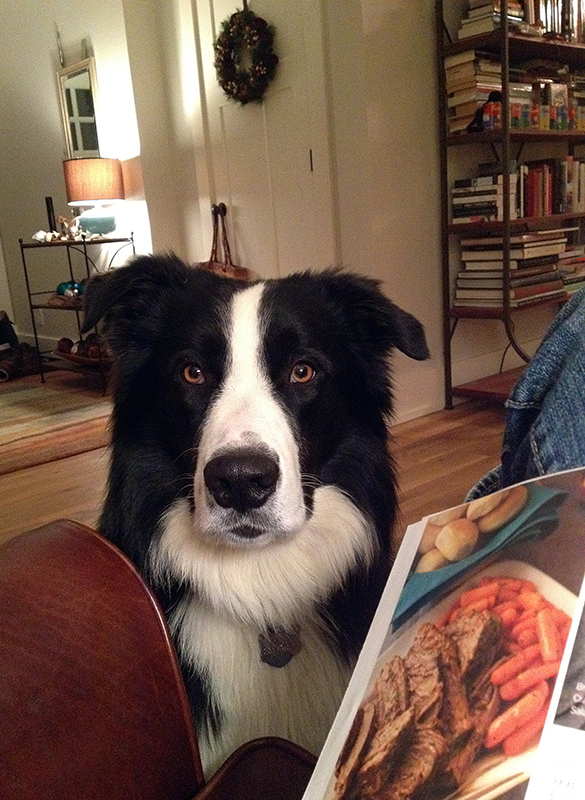
And finally, lots of woodstove sitting, reading, and spending time with this handsome lad, who is relishing his increased responsibility on the farm and every day grows more accomplished. Official presented kill tally: two wood rats and one mole. Way to go, Farmdog!

































